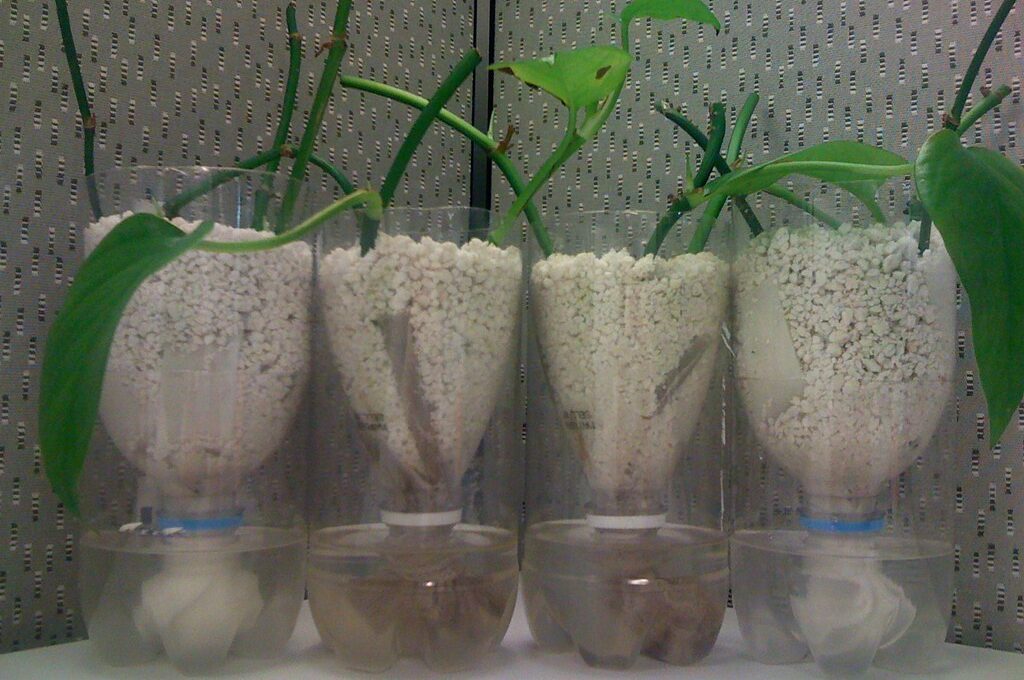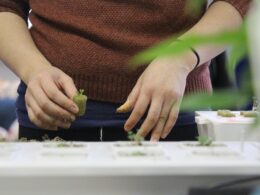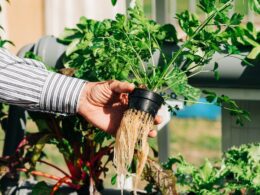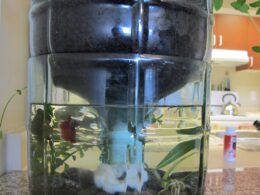Are you considering using Dutch buckets for your hydroponic gardening? While Dutch buckets have many advantages, including efficient water usage and high yields, it’s important to also consider the potential disadvantages.
One of the main disadvantages of Dutch buckets is the high initial cost. While the long-term savings on water and fertilizer can be significant, the initial investment in materials and set-up can be daunting.
Additionally, Dutch bucket systems require regular maintenance to ensure the proper nutrient balance and pH levels, which can be time-consuming and require specialized knowledge.
By weighing the cost and maintenance requirements against the potential benefits, you can determine if Dutch buckets are the right choice for you.
High Initial Cost
Starting a hydroponic garden with Dutch buckets can be quite expensive at first, but it’s worth the investment in the long run. The initial cost includes purchasing the buckets, growing medium, irrigation system, and nutrients. However, the long-term savings can be significant.
You can grow more plants in a smaller space, and the yield can be higher compared to traditional soil-based gardening. When considering the initial cost, it’s important to do an ROI (Return on Investment) analysis. This analysis can help you determine how long it will take to recoup your initial investment.
It will also help you understand the potential savings over time. While the initial cost may seem high, the savings in water, nutrients, and time can make it worth the investment in the long run. In conclusion, while the initial cost of starting a hydroponic garden with Dutch buckets can be high, the long-term savings can be significant.
With the potential for higher yields and the ability to grow more plants in a smaller space, it’s worth considering this system for your next gardening project. Don’t let the initial cost deter you from exploring this option. Take the time to do an ROI analysis and see the potential savings over time.
Maintenance Requirements
Maintaining these systems requires regular attention and upkeep to ensure optimal performance. One of the main maintenance requirements for Dutch bucket systems is cleaning. You’ll need to clean the buckets and pipes regularly to prevent clogging and ensure proper water flow. The cleaning frequency will depend on your specific system, but it’s recommended to clean them at least once a month.
Another maintenance requirement for Dutch bucket systems is managing the nutrient balance. You’ll need to monitor the nutrient levels in the water and adjust them as needed to ensure your plants are receiving the proper nutrients. This can be time-consuming and requires a certain level of knowledge about plant nutrition. If the nutrient levels aren’t properly balanced, your plants may not grow as well or may even die.
Overall, while Dutch bucket systems can be a great way to grow plants, they do require more maintenance than traditional gardening methods. You’ll need to invest time and effort into cleaning the system and managing the nutrient balance. However, if you’re willing to put in the work, the rewards can be great in terms of the quality and quantity of your harvest.
Can Filtering Water Help with the Disadvantages of Dutch Buckets in Hydroponics?
Filtering water for hydroponics can indeed address some of the drawbacks of using Dutch buckets in this cultivation system. The filtering process eliminates impurities and contaminants, ensuring a clean and balanced nutrient solution for plants. This helps prevent clogging or blockages in the buckets, ultimately maximizing water flow and nutrient uptake. Filtered water also contributes to maintaining optimal pH levels and preventing the accumulation of harmful substances, enhancing the efficiency and overall success of hydroponic Dutch bucket systems.
Limited Versatility
The limited versatility of this system may pose a challenge for those seeking more flexibility in their gardening options. While Dutch buckets are ideal for growing tomatoes, cucumbers, and peppers, they may not be suitable for other types of crops. Alternative applications for this system are limited, making it difficult to experiment with different plants. If you want to try new crops or create a diverse garden, Dutch buckets may not be the best choice for you.
With limited versatility, you may end up with a one-crop wonder garden. Dutch buckets are designed to grow a specific type of crop, which means that you may not be able to grow other types of plants. For instance, if you want to grow root vegetables or leafy greens, you may not get the best results. This can be frustrating if you want to experiment with different plants or if you want to create a diverse garden.
Crop selection is a crucial factor to consider when using Dutch buckets. Certain crops require specific growing conditions, and if you don’t provide them, you may end up with poor results. For example, some plants may require more or less water, nutrients, or sunlight, which may not be possible to achieve with this system. This means that you may have to limit your crop selection or adjust your growing conditions accordingly.
While Dutch buckets are ideal for certain types of crops, they may not be the best option for everyone. If you want to grow a diverse garden or experiment with different plants, you may want to consider other growing systems. However, if you’re looking for a simple and effective way to grow tomatoes, cucumbers, and peppers, Dutch buckets may be the perfect solution for you.
Potential for Disease and Pest Issues
If you’re looking to grow thriving plants and avoid potential disease and pest issues, it’s important to be aware of the challenges that come with dutch bucket gardening. Unfortunately, this type of system can be prone to developing diseases and attracting pests that can significantly impact crop yield.
The main issue with dutch bucket gardening is that it uses a recirculating system that continuously circulates water and nutrients. While this can be great for plant growth, it can also create the perfect environment for harmful pathogens to thrive.
To prevent disease and pest issues, it’s important to take preventative measures, such as maintaining proper pH levels, using sterile growing medium, and regularly sanitizing the system. It’s also recommended to avoid overwatering, as excess moisture can create a breeding ground for harmful bacteria and fungi.
In addition, it’s important to stay vigilant and regularly inspect plants for any signs of disease or pest infestations, as catching these issues early can prevent them from spreading and causing further damage.
Despite these challenges, dutch bucket gardening can still be a highly effective growing system when proper care and attention is given. By taking preventative measures and staying on top of plant health, it’s possible to minimize the risk of disease and pest issues and achieve a successful harvest.
While it may require a bit more effort and attention than other gardening methods, the potential rewards of a bountiful harvest make it well worth the extra effort.
Environmental Concerns
You’ll appreciate the positive impact on the environment when you implement sustainable practices in your gardening, like those discussed in this section. Unfortunately, Dutch buckets may not be the most environmentally friendly option for your garden. These buckets require a lot of water, which can be a concern in areas with limited water resources. Additionally, the buckets are typically made from plastic, which can contribute to environmental waste.
Sustainability practices are crucial for the health of our planet, and water conservation techniques are an essential part of that. Dutch buckets require a significant amount of water to maintain, which can be a problem in areas with water scarcity. This can lead to increased water bills and a strain on the local water supply. To combat this issue, consider implementing a drip irrigation system or using rainwater harvesting techniques to reduce water usage.
While Dutch buckets can be a practical and efficient option for gardening, their environmental impact should not be overlooked. By exploring alternative options, such as utilizing sustainable materials or implementing water conservation techniques, you can reduce your carbon footprint and promote a healthy environment for years to come. Remember, every small step towards sustainability counts.
Frequently Asked Questions
How long do Dutch buckets typically last before needing to be replaced?
If you’re considering using Dutch buckets for your hydroponic system, it’s important to be aware of their potential drawbacks. One of the most important factors to consider is their maintenance requirements.
Dutch buckets typically last for several years before needing to be replaced, but they do require regular maintenance to ensure they continue functioning properly. Depending on the type of plants you’re growing and the conditions of your system, you may need to clean and inspect your Dutch buckets as often as once a week.
However, with proper maintenance, Dutch buckets can be a cost-effective and efficient way to grow plants in a hydroponic system.
Can Dutch buckets be used for growing plants other than tomatoes?
Looking to grow other crops in your Dutch buckets? Well, you’re in luck because they can be used for a variety of plants beyond just tomatoes.
However, it’s important to consider the nutrient requirements of the specific crops you plan to grow. Different plants have different needs, so it’s crucial to ensure that you’re providing the proper nutrients for optimal growth.
With proper care and attention to nutrient requirements, Dutch buckets can be a great option for growing a wide range of plants.
What is the average yield per plant in a Dutch bucket system?
When it comes to growing plants in a dutch bucket system, the yield variations can be significant. The average yield per plant can range from a few pounds to over 20 pounds, depending on the plant variety and nutrient management.
It’s important to keep a close eye on the nutrients in the system, as improper management can lead to nutrient deficiencies or toxicities. However, with proper management, dutch bucket systems can be highly productive and efficient for growing a variety of crops.
It’s important to note that while there are some disadvantages to using dutch buckets, such as the potential for disease transmission and the need for frequent maintenance, these can be minimized with proper care and attention.
Are there any specific types of pests or diseases that are more common in Dutch bucket systems compared to other hydroponic systems?
Common pests and nutrient deficiencies can be a challenge in any hydroponic system, including Dutch buckets. Some of the most common pests in Dutch bucket systems include spider mites, aphids, and whiteflies.
Nutrient deficiencies can also occur, especially if the nutrient solution isn’t properly balanced or if the pH is too high or too low. To prevent these issues, it’s important to regularly monitor and maintain the system, including checking for pests and adjusting the nutrient solution as needed.
Additionally, practicing good hygiene and sanitation can help prevent the spread of pests and diseases.
How does the environmental impact of Dutch bucket systems compare to traditional soil-based agriculture?
When it comes to sustainability, Dutch bucket systems have both advantages and disadvantages compared to traditional soil-based agriculture.
On the one hand, Dutch buckets use significantly less water than soil-based agriculture, making them a more water-efficient option. However, the energy efficiency of Dutch bucket systems compared to other hydroponic setups isn’t clear-cut. While they may use less water, they often require pumps and other equipment that consume energy.
Additionally, the materials used to construct Dutch buckets may have a higher environmental impact than soil-based agriculture.
Overall, it’s important to weigh the benefits and drawbacks of Dutch bucket systems carefully before deciding if they’re the right choice for your operation.
Conclusion
So, there you have it – the disadvantages of Dutch buckets. While they’re a popular hydroponic growing method, they do come with some downsides to consider before investing in the system.
Firstly, the initial cost can be quite high, and maintenance requirements can be time-consuming.
Additionally, Dutch buckets have limited versatility and may not be suitable for all types of plants.
There’s also the potential for disease and pest issues, which can be a significant problem if not managed properly.
Finally, there are environmental concerns to consider, such as the use of plastic materials and the amount of water required for the system.
Overall, Dutch buckets can be a great option for hydroponic growing, but it’s essential to weigh the pros and cons before deciding if it’s the right choice for you and your plants.









